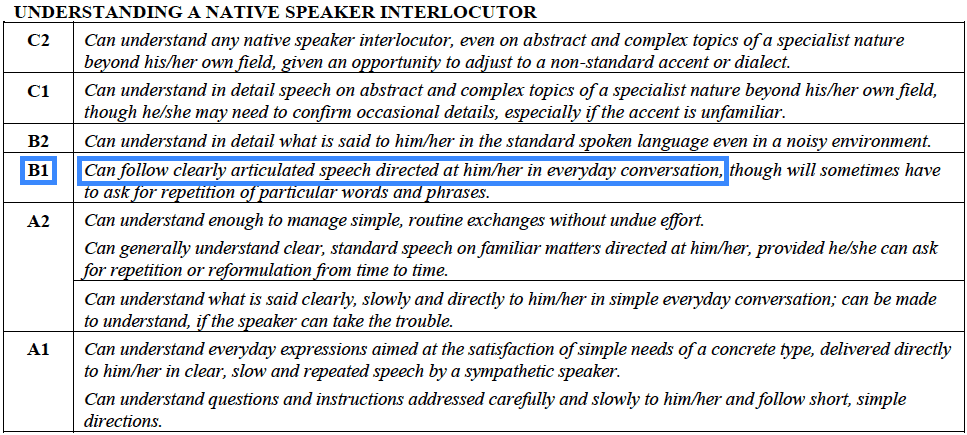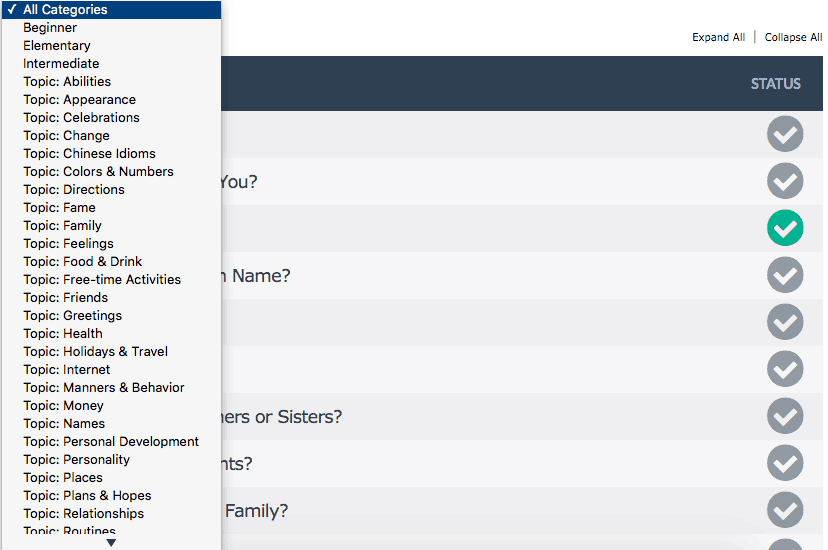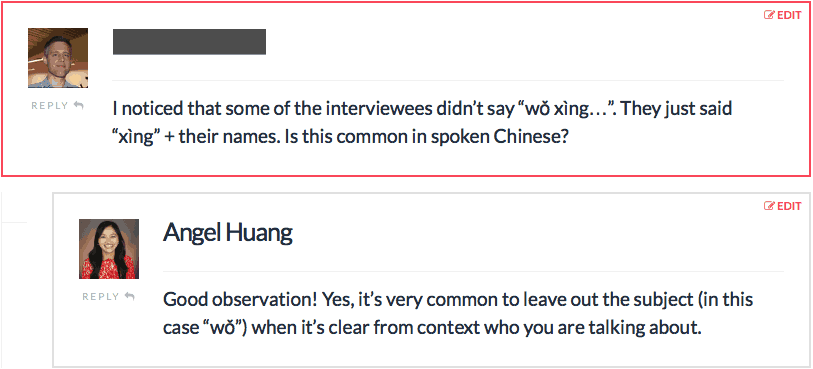THE REAL SPOKEN CHINESE VAULT
Learn to Understand Mandarin Chinese Speakers in Conversation...
Even When They Speak Fast!
DOES THIS SOUND FAMILIAR..?
You grow your vocabulary and work on your pronunciation. You listen to Chinese textbook dialogues. You feel like your comprehension is improving...
But when you put your study materials away and try to communicate with native speakers, you barely understand a thing they say.
Your brain kicks into overdrive trying to process what you hear, but it's too fast.
You ask for repetition. Ask them to slow down.
You recognise a few words, but the message is often still unclear!
After all the effort you put into making yourself understood, it's downright discouraging when you can't make sense of what people say back to you...
Hey, I'm Angel Huang, co-founder of Mandarin HQ, and in the 17 years that I’ve been teaching Chinese, this is one of THE MOST FRUSTRATING problems I've seen students struggle with.
It’s not just that things can get awkward when you don’t understand…
Or that it keeps you from using the language to do what you want:
- Connect with native speakers...
- Develop real friendships and relationships...
- Get around and truly experience the local culture...
The worst part for many learners is that listening simply never seems to get any easier.
I'd like to change that!
Introducing...
The Real Spoken Chinese Vault
A one-of-a-kind system designed to build your listening ability and confidence to understand Mandarin speakers in conversation.
“The Vault” is made up of 150 video lessons that are based around short interviews with people from all over China. You get tuned into the diversity of real-world Mandarin and...
GET INSTANT ACCESS TO THE REAL SPOKEN CHINESE VAULT
One-time Payment... Permanent Access!

Secure Payment
If you have any questions about the course, email me at angel@mandarinhq.com
WHAT OTHER STUDENTS ARE SAYING...
"Wait... Is this normal, or is it just me?"
It comes as a surprise to many learners that speaking often isn't the hardest part of holding a conversation in Chinese...
And when they notice that listening can be at least as hard, they begin to wonder:
"Is this normal, or is it just me?"
Fortunately, discovering that they're NOT alone is easy! All it takes is a quick chat with some other students... or a peek into an online forum:
“Often when Chinese is spoken directly to me I can't comprehend the meaning. It's especially frustrating because often I am able to form a sentence with the same meaning and words, but when it's spoken to me my mind blanks out... Obviously, that is extremely inconvenient because I can't answer properly and I just feel stupid.”
“I have been studying for a little over a year and native Chinese speakers usually get what I'm saying (even though my grammar and vocabulary is fairly basic and my tones are not great). The problem is that when they answer my questions or try to tell me something, I understand almost nothing! ”
“I don't like not being able to understand people. Shopowners just talk so fast that I can't even catch a phrase or sentence. It all blurs into one massive noise. ”
“Listening comprehension is my biggest weak spot, and it creates a disincentive for me to engage in conversations because of how quickly Chinese speakers get frustrated with my requests to repeat, repeat, repeat. (Along with slow down, slow down.) ”
Of course, "not understanding" is part of a process that every learner goes through. But for many it becomes a crippling problem.
And it’s often especially frustrating for students whose listening is below Intermediate level (B1):
* Internationally recognized level descriptors for listening comprehension from the "Common European Framework of Reference for Languages"
The good news is that there are things you can do to avoid getting stuck at the lower levels for too long!
So, unless your listening is already above "B1", keep reading and we'll explore that in a minute — but first things first...
WHY MOST LEARNERS STRUGGLE TO UNDERSTAND REAL SPOKEN CHINESE
(AND DON'T KNOW WHAT TO DO ABOUT IT)
It began to dawn on me back in 2007.
I had just started teaching for one of the biggest Mandarin training companies in China...
Here's what got me thinking:
Most of my students had studied on their own or taken classes with a teacher before coming to China. Some for six months. Others for a year or more.
Yet, when they arrived in the country and tried to apply what they'd learnt with their new colleagues, friends, clients, taxi-drivers, random strangers... they found themselves struggling to understand even the most basic questions and answers!
For many of them, this was a BIG deal.
It shook their confidence and made them less excited about speaking to people.
And when I asked my students why they thought they were having such a hard time understanding people, most of them said something along these lines:
“They talk sooo fast!”
“Their pronunciation sounds really different from what I'm used to”
“They use lots of vocabulary and grammar I haven't learned”
“I feel nervous and can't focus when I listen to native speakers face-to-face”
These comments, of course, made perfect sense!
If you think about a time when YOU couldn't understand what someone said to you in Chinese, it was probably to do with one or more of these four reasons:
As I dug deeper into the challenges my students were facing...
... it became clear that they weren't just struggling because spoken Chinese is hard to understand in and of itself.
A big part of it was to do with how students typically study (heavy focus on memorising new words in isolation; inadequate listening practice; not enough actual communication) and the resources they typically use to guide them along their path.
It struck me that:
Most materials made for Mandarin learners — textbooks (+ CDs/DVDs), audio courses, podcasts etc. — do a poor job of helping their users prepare for communication with real people.
Sure, they teach vocabulary and grammar that you can use in conversation. You get clear, standard models for pronunciation. And if you successfully copy these, your chances of making yourself understood are good.
But here's the problem...
They rarely show you how people in the real world actually speak.
"TEXTBOOK"
- Few Ways to Express an Idea (Little Variety in Vocabulary and Grammar)
- Perfectly Formed and Complete Sentences
- Unnaturally Slow
- Distinct Speech; Clear Voices; Standard Pronunciation
- (Voice) Actors Reading Scripts Out Loud
"REAL"
- Many Ways to Express the Same Thing (Huge Variety in Vocabulary and Grammar)
- Fillers; Hesitations; Incomplete Sentences
- Natural Speed ("Fast")
- Connected Speech; Huge Variety of Voices and Accents
- Real People; Real Opinions; Real Feelings
The gap between textbook Mandarin and everyday speech is strikingly obvious.
Native speakers speak “fast”, cut words, use slang and break grammar rules all the time. And, let’s not forget about accents!
Yet, most courses, learning materials and, dare I say it… teachers, do little to help students get comfortable with this reality.
So then…
How do you get good at understanding naturally spoken language?
Having conversations helps of course, but learners who improve their comprehension a lot in a short span of time typically don’t rely on this as the only way to rev up their progress!
"APART FROM THE PRACTICE I GET DURING CONVERSATIONS WITH NATIVE SPEAKERS... WHAT SHOULD I LISTEN TO AND HOW?"
I’ll be honest, back in 2007 when I realised just how tricky listening comprehension is for many learners, I wasn't sure how to tackle it!
I started studying and experimenting with different methods, techniques and materials… I looked for inspiration and tips from successful learners who had experienced the frustration and pushed through…
And as I worked with more and more students who needed to get their comprehension up to scratch, things gradually became a lot clearer.
I want to share some of the things I learned in the process.
- Listening a lot is not enough! -
Now, don't get me wrong...
It's a great idea to make listening a daily habit. The more you listen, the faster you improve!
But listening “a lot” doesn’t automagically lead to quick results. It also comes down to how you do it.
And though it doesn't have to be complicated, there’s a number of pitfalls I've seen that SERIOUSLY slow down students' progress.
One of the worst is thinking that you have to understand everything the first time you listen to a new (audio or video) clip… and if you don’t, you tell yourself that “it’s too difficult” and tune out...
Here’s what to do instead:
- Listen actively and repeatedly -
First of all, if you don’t understand 100% the first time you listen, that’s a good thing…
… because you need to push past your “comfort zone” to improve!
So instead of starting with something that you can understand completely, use a short clip that’s a bit challenging at first, and then work toward full understanding.
How?
If you have a transcript and translations for the clip, the basic process looks like this:
Listen to the clip several times without reading the transcript. The first few times you listen, focus on getting the main point(s) — just as if you were listening to someone in an actual conversation. Then listen a few more times and try your best to make out every single word you hear. |
Listen and follow along with the Chinese transcript (characters or pinyin). This will help you notice any differences between the words and sounds you think you heard and what was actually spoken in the clip. |
Listen and follow along with the (English) translation. It’s time to check and clarify your understanding. If there are (important) words or phrases that you still don’t understand, find out what they mean before you move to the next step… |
Listen to the clip again without reading the transcript. Test yourself! By now you should be able to understand the main points and pick out most of the individual words in the clip without much trouble. (If you still find certain bits challenging, go back to step 2 or 3 and fill in the gaps) Pretty straightforward! But… of course, it’s not just about the process — the HOW. WHAT you listen to makes a big difference. After extensive experimentation with all sorts of audio and video materials, I started to notice that there was more to it than simply picking materials that seemed "interesting" and "suitably challenging". One thing I found was that clips where people speak spontaneously (e.g. clips from interviews, talk shows/reality shows) often were more effective than scripted materials. Not surprising, I guess. After all… What you listen to should reflect your goals! And if your priority is to understand people in everyday conversation, it makes sense to… - Listen to recordings of regular people speaking naturally (not just actors delivering rehearsed scripts!) - “But, I’ve only been learning Mandarin for x months, and when I hear people speaking spontaneously it sounds like gibberish! Is there any point listening to it?” Well, that’s a good question… because your comprehension won’t improve much just because you listen to naturally spoken language — not if it all goes over your head! So, the big question is: How do you make it comprehensible? And part of the answer is this: - Use short clips that tie in with topics or language points that you have already studied -For example: You’ve learned how to ask and answer questions about what people like to do in their free time. And then listen to clips where native speakers do exactly that. That way there’s a good chance you’ll come across and get better at picking out vocabulary you already know… AND work out some of the stuff you don’t know from context. But there’s a catch! Finding suitable clips can be a real pain — especially since you want to make sure you listen to a variety of speakers. That’s why I eventually started making my own audio and video materials… And when did, I gained a number of surprising insights — like this one: |
To get comfortable listening to people face-to-face...
Practice with materials that feature people “talking to you face-to-face”!
It started with a simple experiment.
Before teaching a lesson on asking for directions, I had a bunch of Chinese friends and colleagues look straight into my video camera (one by one) and answer the question "How do I get to the nearest subway station" in Mandarin.
The image and sound quality of the final video wasn’t great… but the students played it over and over and said they LOVED it because:
Fast forward 8 years...
... and the concept of that video evolved into my single most powerful tool for helping Mandarin learners make the leap from textbook to natural spoken language.
I'll show you exactly how it works in a minute.
But first, ask yourself this simple question:
HOW WOULD IMPROVING YOUR CHINESE LISTENING COMPREHENSION CHANGE YOUR LIFE?
If you're like me and most language learners I've known, you'll probably agree that it feels (or would feel...) great to have conversations that "flow" in a foreign language.
Conversations where you don't have to ask people to repeat or slow down all the time.
When they say something, you "just get it" without thinking. Without getting lost as they keep talking while your brain is busy decoding what you heard a few seconds earlier!
It's a great feeling.
But... the benefits of good listening skills go way beyond how it feels during a conversation.
Imagine how much easier it would be to connect with people and function in a Chinese speaking environment – to...
... know what's expected of you in different situations.
... get around and experience the local culture.
... make good impressions on people you meet, and
... build close relationships with the ones who matter to YOU.
(friends, clients, colleagues, girl/boyfriend, in-laws..?)
To do these things, good listening comprehension is AT LEAST as important as good speaking ability.
That's why I make a big deal out of helping students move toward a point where they can comfortably listen to a variety of people and make sense of what they hear...
It's why — after years of doing this — I've created a system to make the process of getting to that point a lot smoother.
THE REAL SPOKEN CHINESE VAULT
A one-of-a-kind system designed to build your listening ability and confidence to understand Mandarin speakers in conversation.
“The Vault” is made up of 150 video lessons that are based around short interviews with people from all over China. You get tuned into the diversity of real-world Mandarin and...
SEE HOW IT WORKS
The lesson in the video above is from the "Beginner" level. To give you a sample of something a bit more challenging, here are the first 3 (of 4) steps from a different lesson:
⇣
STEP 1: LISTEN & WATCH
Play the video several times. First notice how the different speakers ask the question (Q1-Q6), and try to catch the main point of each answer (A1-A6). Then try to make out every word each person says.
"Please say that again" buttons
Get any of the speakers to repeat what they said... as many times as you like!
The "Please speak slooowly" setting
Change the playback speed to 0,5... if you want to hear EVERY syllable "clearly".
STEP 3: LISTEN & READ (ENGLISH)
Play the video several times. Follow along with the English subtitles to clarify your understanding.
Note: STEP 3 also contains a word-for-word transcript so you can look up and study specific words and phrases in context. In STEP 4 you take a quiz to confirm that you can catch the main points and pick out details while listening. You can also download the audio and listen to it anywhere. |
|---|
I WANT IT TO BE EASY FOR YOU TO...
_____________
FOCUS ON WHAT'S RELEVANT
The lessons in The Vault are categorized by level and can be taken in ANY order so that you can focus on what's most suitable for YOU at any given time.
LISTEN ANYWHERE
The videos and quizzes work on ANY device connected to the internet. You can also DOWNLOAD the audio and word-for-word transcript for each lesson to listen, review and learn on the go.
GO AT YOUR OWN PACE
Once you unlock the content in the Vault, you have PERMANENT access! If you’re busy…or something comes up at work… just log back in whenever you’re ready. (That said — the more consistently you use the system, the faster you improve!)
⇣
TRACK YOUR PROGRESS
See which lessons you have completed and get a snapshot of your overall course progress on your profile page.
GET ANSWERS TO ALL YOUR QUESTIONS!
Each lesson step has a discussion section where you can ask about anything related to that specific lesson — pronunciation, vocabulary, grammar, culture, anything.... Whenever a question crops up, just type it out and hit "submit". I will personally answer it.
⇣
THE REAL SPOKEN CHINESE VAULT IS NOW OPEN FOR ENROLLMENT
Here's what you get:
One-time Payment... Permanent Access!

Secure Payment
If you have any questions about the course, email me at angel@mandarinhq.com
100%
MONEY BACK GUARANTEE
MY UNBEATABLE GUARANTEE:
I stand by the quality of The Real Spoken Chinese Vault and I'm confident it will work for you. But if you buy it, try it, and for some reason feel it isn't for you, just send me an email within 30 days of purchase and I'll give you a full refund right away. No questions asked.
IS "THE VAULT" RIGHT FOR YOU?
I'm offering a 30-day money back guarantee so that you can try the course risk free. That said, please read this if you're not yet sure whether to give it a try:
X The Real Spoken Chinese Vault is not for you if:
✓ The Real Spoken Chinese Vault is right for you if:
"This really helps with the immersion process when you're not in the country..."
Marcus recorded this video after using "The Vault" for 28 days.
___________________
"The Real Spoken Chinese Vault has really helped me with my communication ability..."
Johan recorded this video after using "The Vault" for 29 days.
FREQUENTLY ASKED QUESTIONS
Can I access the content on any device?
Are the video subtitles/transcripts in simplified or traditional characters?
Is this a recurring payment?
Can I ask you another question?
GET PERMANENT ACCESS TO THE REAL SPOKEN CHINESE VAULT

Secure Payment
If you have any questions about the course, email me at angel@mandarinhq.com
If you've made it this far...
... chances are you're serious about building your ability to understand Mandarin speakers AND you'd love to have a system that makes the process simpler.
But, you might still be on the fence about joining The Real Spoken Chinese Vault today.
Maybe you're thinking:
"Will I have time for this?" or
"Is it worth the money?"
If so, remember that you can try the course risk free.
If you feel it isn't for you, simply email me within 30 days of purchase and I'll return 100% of your money. It's that simple, because I'm only happy if you're happy!
That said... I believe you'll get great value out of the course.
I believe that, if you put some time and effort into following the steps in these lessons now, you'll start seeing results very soon — and reap the rewards for years to come.
Hope to see you inside :)
Angel Huang
ⓒ 2024 by Mandarin HQ. All Rights Reserved.
Contact me Disclaimer














